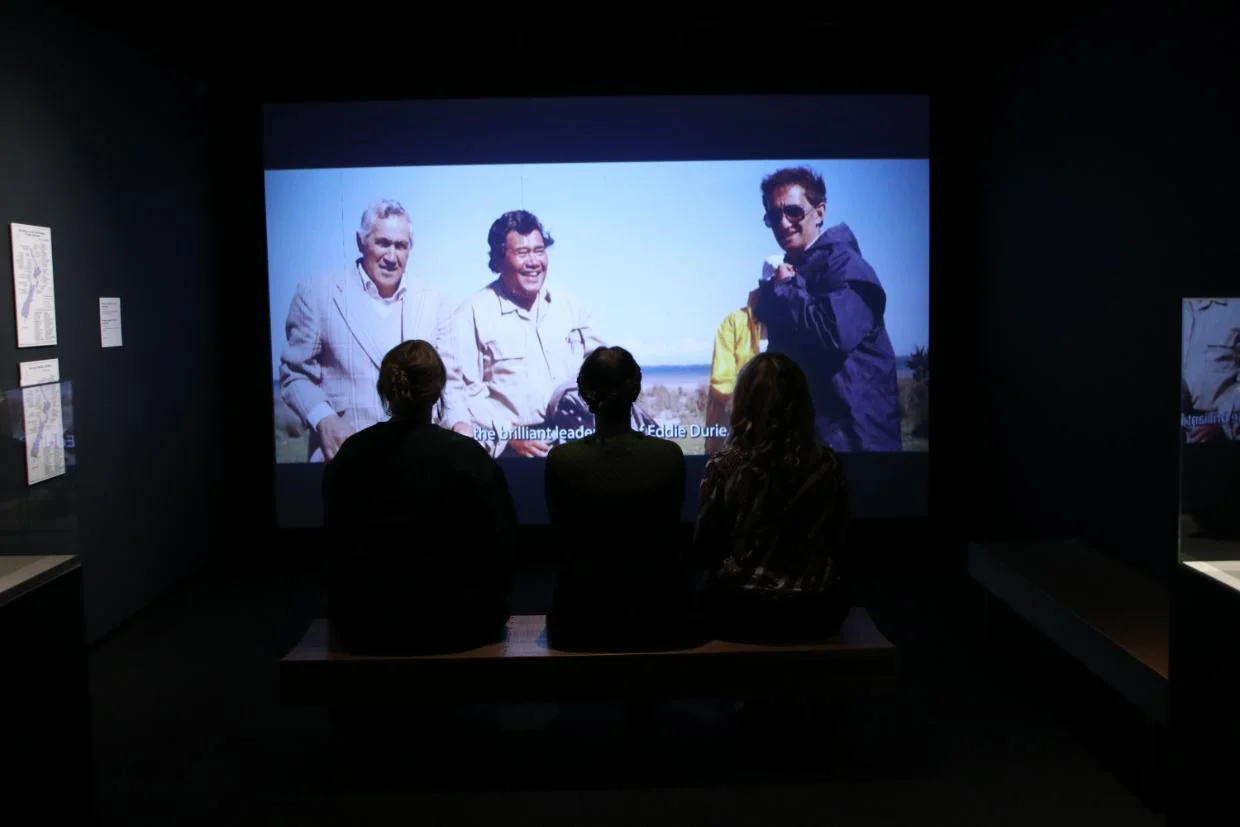Honouring 50 Years of the Waitangi Tribunal
By Tānemahuta Gray, Kaihautū | Director Māori Strategy.
By Tānemahuta Gray, Kaihautū | Director Māori Strategy.

Six months ago, Waitangi Tribunal members including its chairperson and Chief Judge Dr Caren Fox and deputy chairperson and Judge Sarah Reeves, asked Wheako Pōneke Experience Wellington to consider presenting the tribunal’s exhibition He Kura Toi Tangata – 50 Years of the Waitangi Tribunal 1975-2025, at Te Waka Huia/Wellington Museum.
Despite requiring us to re-think our planned programming, it was an absolute must for Wheako Pōneke to host this exhibition. We knew that the work and acknowledgement of the Waitangi Tribunal was essential to tautoko (support) at our museum, which proudly shares the stories of the people of Pōneke/Wellington, particularly in the political climate surrounding the Treaty Principles Bill.
This was the zeitgeist issue of the last year and would undoubtedly be relevant six months later when we opened it in Wellington, which is also home to the Waitangi Tribunal offices. It’s vital that we play our part as a supportive Te Tiriti o Waitangi partner organisation, to encourage well-informed kōrero (discussion).
But He Kura Toi Tangata had its first outing at Te Kōngahu Museum in Waitangi, opening in February this year. Although putting on exhibitions is not the core work of the Waitangi Tribunal, their kaimahi (staff) became the curators of these photos that show the stories of its five-decade journey.
Working with curator Owen Taituha from Te Kōngahu Museum, the tribunal created the inspiring exhibition to honour the thousands of people who participated in a process for Māori to have their Te Tiriti grievances heard.

There has been significant change since the Waitangi Tribunal’s establishment in 1975.
In the 1980s, Sir Edward Taihakurei Durie, the tribunal’s former chairperson, discovered issues that dated back to when Te Tiriti was first signed in 1840.
Along with a growing awareness of Treaty issues and protest movements at the time, his reports became the catalyst for the Crown to look at claims that pre-dated 1975, and for Aotearoa to develop a process of settling those grievances.
The tribunal’s impacts have been prolific for Māori. Ngāi Tahu received compensation of $170 million after it signed its settlement with the Crown in 1997. This was, notably, a fraction of what it lost in questionable land sales and land loss over the previous 157 years.
Ngāi Tahu has turned that compensation into $2.1 billion in assets over 27 years. The tribe was a key financial partner in the rebuild of Christchurch, post-earthquakes. Unlike many companies that exited the city after the disaster, an iwi will never leave the bones of its ancestors, proving that an eternal partner is by far the best one to have. As the saying goes, what is good for Māori is good for New Zealand.
He Kura Toi Tangata includes compelling photos, taonga (treasures) and a documentary called Karanga Rā produced by Haututū Creatives for the tribunal, that speaks to the hīkoi (walk/march) taken over those 50 years.

The exhibition provides all New Zealanders with a rich history of this permanent commission of inquiry, and shows how the tribunal has been able to expand on its support of claims made by iwi and Māori.
Ahead of the exhibition’s opening, Wheako Pōneke welcomed the Waitangi Tribunal to Te Waka Huia Wellington Museum with a haka pōwhiri by our kaimahi ‒ a first for us.
Our people worked hard all year to prepare for this moment, with many initially out of their comfort zone. But we were confident in our delivery, and proud to acknowledge and uplift the Waitangi Tribunal for the work it has done over 50 years.
It was a powerful opportunity to bond over this exhibition, and to celebrate the continuing growth of Wheako Pōneke as a Te Tiriti partner organisation.